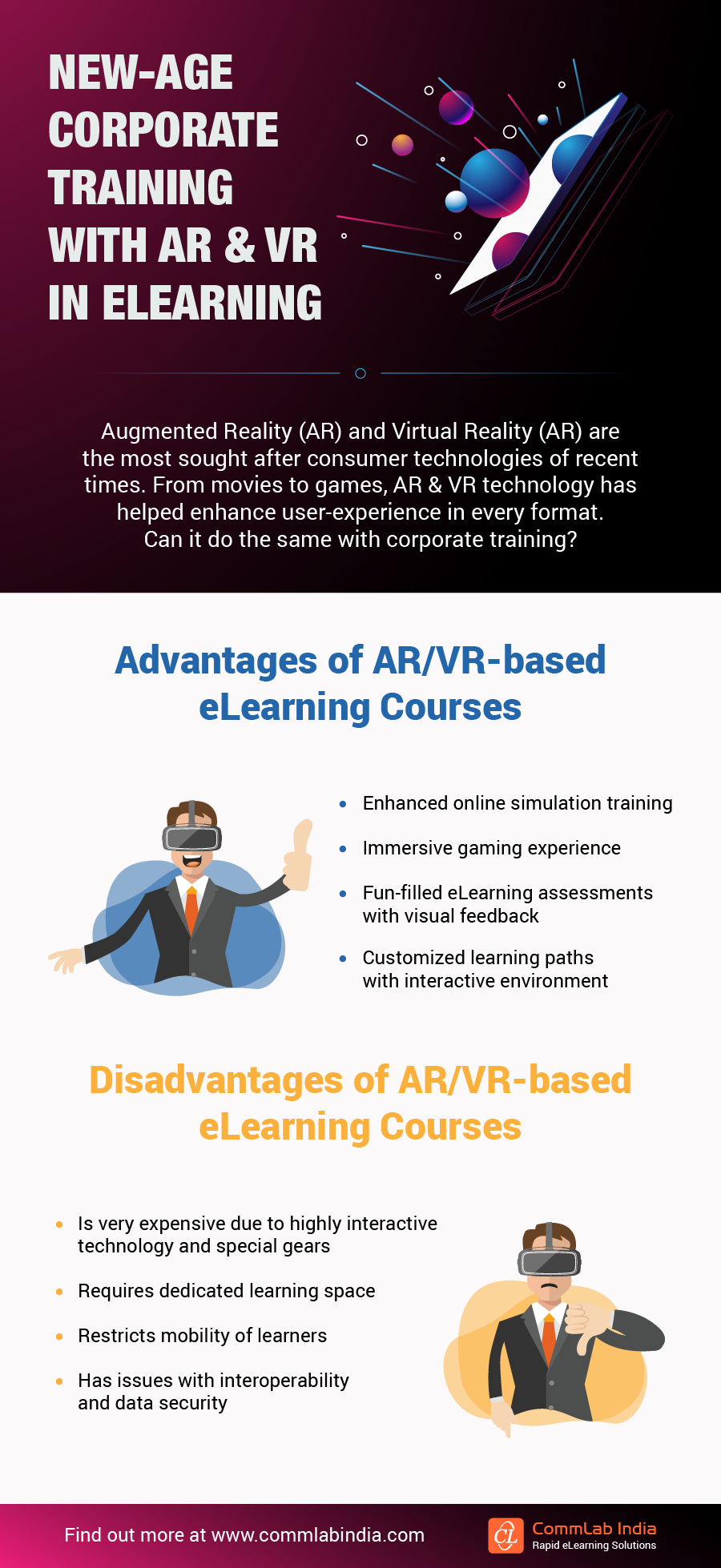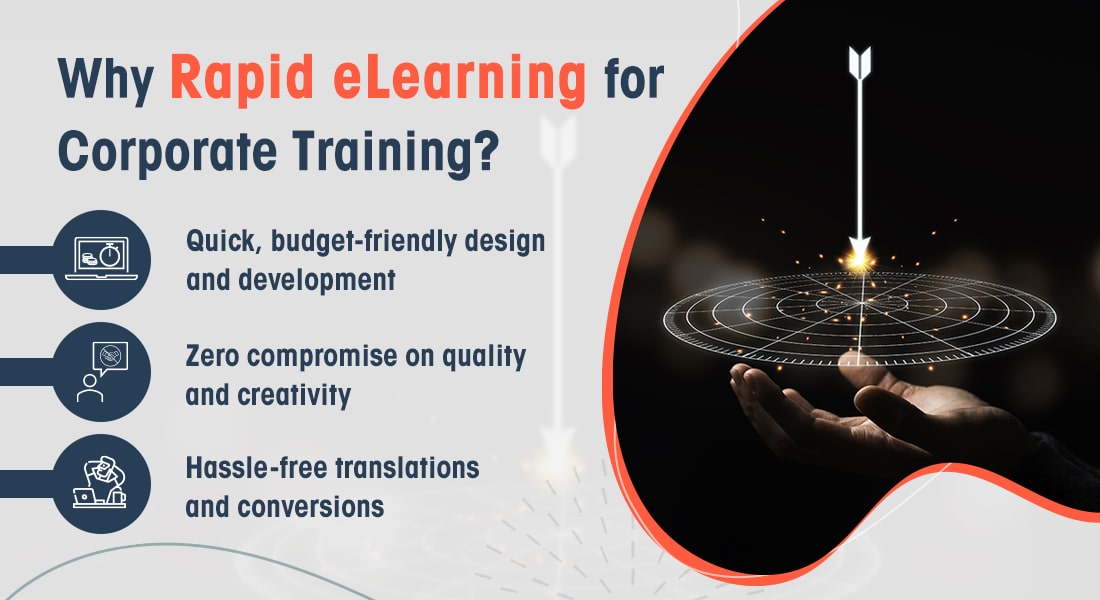New Age Corporate Training with AR and VR in eLearning [Infographic]
The application of AR and VR in eLearning is on the rise. Here are the advantages and disadvantages of AR and VR in eLearning, in a nutshell.

Developments in technology over the past few years have helped AR and VR take some big leaps in the education sector. According to a report by GoldmanSachs, approximately $700 million will be invested in AR/VR applications in education by 2025.
Augmented Reality or AR is where digitally generated content is superimposed on the real world. The simplest way to experience AR is to download an AR app on your smartphone and try it. For more enhanced learning experiences, you will need special AR headsets (e.g. Google Glass).
Virtual reality or VR in eLearning immerses learners in a completely virtual environment and requires learners to use a VR headset. Most VR headsets are connected to a gaming console (e.g. PlayStation VR) or computer (e.g. Oculus Rift). Google Cardboard which is a standalone VR device is one among the most popular.
One main difference between AR and VR in eLearning is that while AR uses digital elements to enhance real-world conditions, VR transports learners into a virtual environment that simulates the real world.
Like what you read? To get more such helpful information, subscribe to our blogs.
So, what makes AR and VR a cool technology to use in eLearning? And what’s not so great currently? Although the price, content development, and technology constraints are seen as hurdles in the adoption of AR and VR in eLearning, we believe with the rapid growth of AR/VR technology, these factors will no longer remain hurdles.
Here’s an infographic that lists the advantages and current disadvantages of using AR/VR in eLearning.
Well, that was about new technologies, but have you thought about what’s going to happen to your Flash-based eLearning courses once Adobe stops support for the Flash player? To know more about converting Flash courses to HTML5, check this helpful resource.







